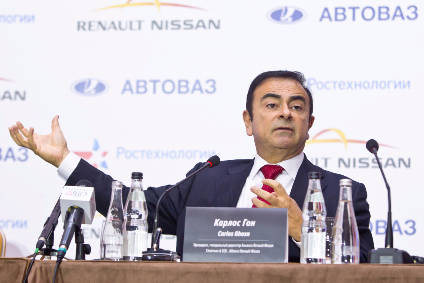
The Renault-Nissan-Mitsubishi Alliance has reported a 14% increase in annual synergies to EUR5.7bn in 2017, up from EUR5bn in 2016. The Alliance said it benefited from growing cost savings, incremental revenues and cost avoidance.
The latest synergies reflect the economies of scale realised by the Alliance members, which reported total sales of more than 10.6m vehicles for 2017 – becoming the world’s largest automotive group in terms of sales of passenger cars and light commercial vehicles (LCVs).
“The Alliance has a direct, positive impact on the growth and profit of each member company,” said Carlos Ghosn, Chairman and CEO of Renault-Nissan-Mitsubishi. “In 2017, the Alliance turbo-charged the performance of all three companies including Mitsubishi Motors which saw its first full-year of synergy gains.”
“We expect to generate growing synergies in coming years as the Alliance accelerates convergence through increased utilisation of joint plants, common vehicle platforms, technology-sharing and our combined presence in mature and emerging markets. We reaffirm our synergy goal of more than EUR10bn by the end of 2022.”
Two-thirds of output on four common platforms
Under the Alliance 2022 mid-term plan, the member companies forecast to sell more than 14m vehicles by the end of the plan, of which 9m will be built on four common platforms including electric and B segment vehicles, and extending the use of common powertrains from one third to 75% of the total.
How well do you really know your competitors?
Access the most comprehensive Company Profiles on the market, powered by GlobalData. Save hours of research. Gain competitive edge.

Thank you!
Your download email will arrive shortly
Not ready to buy yet? Download a free sample
We are confident about the unique quality of our Company Profiles. However, we want you to make the most beneficial decision for your business, so we offer a free sample that you can download by submitting the below form
By GlobalDataThrough the converged Engineering function, the Alliance member companies share R&D costs and investments, which increase their competitiveness. For instance, Nissan and Mitsubishi Motors joined forces last year to develop the next generation of Kei cars.
In 2017, the Alliance Purchasing Organization (formerly RNPO) generated significant cost reductions and avoidance through centralized sourcing of parts, equipment and tooling, global contract negotiations, and common utilities sourcing at facilities around the world.
The companies said examples of new synergy include:
- The adoption by Mitsubishi Motors of Nissan Sales Finance and Renault RCI Bank and Services capabilities;
- Benchmarking between Nissan and Mitsubishi Motors in the ASEAN region;
- Shared spare parts warehouses between Renault, Nissan and Mitsubishi Motors in Europe, Japan and Australia.
In Manufacturing, ongoing synergies were also realised through vehicle production on shared platforms such as the Datsun Redi-Go and Renault Kwid, and through cross-manufacturing activities such as Renault Alaskan production at the Nissan plants in Cuernavaca, Mexico and Barcelona, Spain. Costs associated with vehicle transportation were significantly reduced in 2017, as Nissan and Mitsubishi Motors combined shipments of finished vehicles from plants in Thailand to their respective dealers.
The creation of the LCV converged business unit in 2017 maximised cross-development and cross-manufacturing, delivering synergies in costs and technology in vehicles such as the Nissan platform based one-ton pick-up truck by Renault and Daimler. This allowed the extension of Alliance market coverage to 77% with a total range of 18 models across Renault, Nissan and Mitsubishi Motors.
“Deeper convergence and increased synergies will cement the sustainability of the Alliance for the long term,” said Ghosn.



